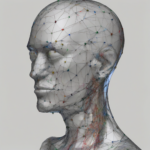Mastering Data Analysis: A Comprehensive Guide to the Field and its Opportunities
In today’s data-driven world, the ability to analyze and interpret vast amounts of information has become an invaluable skill. Data analysis professionals are in high demand across industries, playing a crucial role in driving decision-making, uncovering insights, and shaping the future. This comprehensive guide will delve into the world of data analysis, exploring its multifaceted nature, the skills required, and the lucrative career opportunities it offers.
What is Data Analysis?
Data analysis is the process of examining raw data to extract meaningful insights and draw conclusions. It involves a systematic approach to collecting, cleaning, transforming, and interpreting data using statistical and computational methods. By uncovering patterns, trends, and anomalies, data analysts provide valuable information to organizations, enabling them to make informed decisions and achieve their goals.
The Importance of Data Analysis
Data analysis is an essential tool for organizations in all sectors, fostering data-driven decision-making and achieving competitive advantage. Here are some key benefits:
- Improved Decision-Making: Data analysis provides organizations with a deeper understanding of their customers, markets, and operations, enabling them to make informed decisions based on evidence rather than intuition.
- Increased Efficiency: By identifying bottlenecks and inefficiencies, data analysis helps organizations optimize their processes, reduce costs, and improve productivity.
- Enhanced Customer Experience: Analyzing customer data allows organizations to personalize their offerings, provide targeted support, and create a more satisfying experience.
- Competitive Advantage: Organizations that leverage data effectively gain a competitive edge by identifying market trends, anticipating customer needs, and developing innovative products or services.
- Risk Management: Data analysis helps organizations identify and mitigate risks by uncovering potential problems early and enabling proactive measures.
Key Skills for Data Analysts
Data analysis requires a diverse set of skills, combining technical expertise with analytical thinking and communication abilities. Some essential skills include:
- Statistical Knowledge: Proficiency in statistical concepts, methods, and software is crucial for analyzing data, drawing inferences, and testing hypotheses.
- Programming Skills: Data analysts often utilize programming languages like Python, R, or SQL to manipulate and analyze data, build models, and automate tasks.
- Data Visualization: The ability to present data effectively using charts, graphs, and dashboards is essential for communicating insights to stakeholders.
- Problem-Solving and Critical Thinking: Data analysts need to be able to identify problems, formulate solutions, and think critically about the data to draw accurate conclusions.
- Communication Skills: Effective communication is vital for conveying insights, explaining technical concepts, and collaborating with stakeholders.
- Domain Knowledge: Understanding the specific industry or domain in which data analysis is applied is essential for interpreting results and providing meaningful insights.
Data Analysis Tools and Technologies
Data analysts rely on a wide range of tools and technologies to perform their tasks efficiently and effectively. Some popular tools include:
- Programming Languages: Python, R, SQL, Java, C++, JavaScript
- Statistical Software: SPSS, SAS, Minitab, Stata
- Data Visualization Tools: Tableau, Power BI, Qlik Sense, Plotly, D3.js
- Machine Learning Libraries: scikit-learn, TensorFlow, PyTorch
- Cloud Computing Platforms: AWS, Azure, Google Cloud Platform
- Data Management Systems: MySQL, PostgreSQL, MongoDB, Cassandra
Types of Data Analysis
Data analysis encompasses a wide range of techniques and approaches, each tailored to specific objectives and data types. Some common types of data analysis include:
- Descriptive Analysis: This type of analysis focuses on summarizing and describing the main characteristics of data, providing insights into patterns and trends. Techniques include calculating mean, median, mode, standard deviation, and frequency distributions.
- Diagnostic Analysis: This type of analysis aims to understand the root causes of events or phenomena by identifying relationships and dependencies in data. Techniques include correlation analysis, regression analysis, and hypothesis testing.
- Predictive Analysis: This type of analysis focuses on forecasting future outcomes based on historical data. Techniques include time series analysis, machine learning algorithms, and predictive modeling.
- Prescriptive Analysis: This type of analysis goes beyond prediction to provide recommendations and solutions based on data insights. Techniques include optimization algorithms, simulation modeling, and decision trees.
Career Paths in Data Analysis
Data analysis offers a wide range of career paths, catering to different skill sets and interests. Some common roles include:
- Data Analyst: Entry-level role responsible for collecting, cleaning, analyzing, and interpreting data to support decision-making.
- Business Analyst: Focuses on analyzing business processes and data to identify opportunities for improvement and drive strategic initiatives.
- Market Research Analyst: Conducts research and analyzes market trends, consumer behavior, and competitor activities to inform marketing strategies.
- Financial Analyst: Analyzes financial data, prepares reports, and provides insights to support investment decisions and financial planning.
- Data Scientist: Uses advanced statistical and machine learning techniques to extract insights from data, build predictive models, and solve complex problems.
- Data Engineer: Builds and maintains data infrastructure, pipelines, and systems to ensure data quality and availability.
- Data Architect: Designs and implements data solutions, ensuring data integrity, scalability, and performance.
The Future of Data Analysis
The field of data analysis is rapidly evolving, driven by advancements in technology, the growing volume of data, and increasing demand for data-driven insights. Here are some key trends shaping the future of data analysis:
- Artificial Intelligence (AI) and Machine Learning (ML): AI and ML are transforming data analysis by automating tasks, improving accuracy, and enabling the analysis of complex data sets. Techniques like deep learning and natural language processing are becoming increasingly prevalent.
- Big Data and Cloud Computing: The exponential growth of data is driving the need for scalable and flexible data storage and processing solutions. Cloud computing platforms are playing a critical role in enabling organizations to handle large volumes of data efficiently.
- Data Ethics and Privacy: As data becomes more valuable, ensuring data security, privacy, and ethical usage is crucial. Organizations are implementing measures to protect sensitive data and comply with regulations.
- Data Storytelling and Visualization: Effective communication of data insights is essential for driving action and influencing decision-making. Data visualization tools and techniques are becoming increasingly sophisticated, enabling data analysts to create compelling and informative narratives.
- Data Democratization: Making data more accessible and usable by a wider audience is empowering individuals and organizations to leverage data for insights and innovation. Data analysis tools and platforms are becoming user-friendly and intuitive, enabling citizen data scientists to analyze data without extensive technical expertise.
Conclusion
Data analysis is a dynamic and in-demand field that offers a wealth of opportunities for professionals with the right skills and passion. By mastering the core concepts, tools, and technologies, individuals can embark on fulfilling careers that contribute to the advancement of organizations and society. As technology continues to evolve and data becomes even more ubiquitous, the role of data analysis will become increasingly critical, shaping the future of industries and our world.








